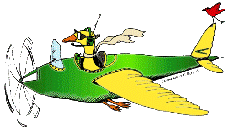Bird Strike Committee Proceedings
Date of this Version
October 2002
Document Type
Article
Abstract
Based on an earlier classification of avoidance movements shown by birds to moving aircraft (Kelly et al. 2001), we have studied the evading maneuvers of the rook (Corvus frugilegus) in relation to the phase of flight of air traffic at Dublin Airport, Ireland. The percentage of individuals which did not show avoidance movements was almost identical for approach/landing and take-off /climb-out movements. However, the nature of the avoiding-response in relation to the phase of flight was different. Thus 78% of responses were “Simple” in the approach/landing flight phase whereas only 5% were in this category during take-off. On omitting the approach data, the difference between take-off and landing was less marked with only 18% being “Simple” in the latter. In the case of the energetically costly “Noose”-type avoidance maneuver, 23% of rooks showed this response to aircraft on take-off as compared to 13% that were landing. Interestingly while “Protean”-type responses were relatively infrequent, they appear to occur with equal frequency during both landing and take-off movements. Recent evidence suggests that there are marked “Protean”-type responses by woodpigeons (Columba palumbus) to ascending aircraft during climb-out. These findings are discussed in relation to the numbers of birds present in the different phase of flight zones on the airfield, seasonal factors, and inter-specific differences in the nature and extent of the avoidance responses.


